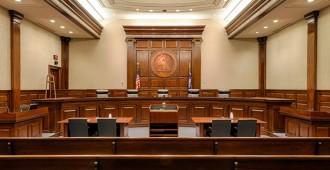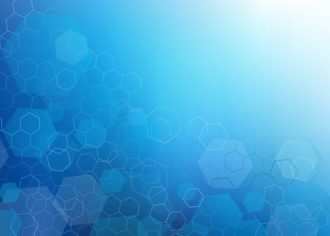
January 24, 2018
At The Bench: Patent Law 2017 Takeaways
Viability of Diagnostic Method Claims
Problem: It has become increasingly difficult to fend off validity challenges when asserting diagnostic method claims. Claims directed to methods of determining risk or disease states relying on naturally-occurring correlations and using conventional techniques are unlikely to survive a patentability challenge.
Solution 1: Consider including treatment steps in method claims, but avoid reciting mental process steps (e.g., diagnosing, comparing, etc.), which are likely to lead to a finding of patent ineligibility under 35 U.S.C. § 101.
Solution 2: When a diagnostic method requires detection of a natural molecule, think of the synthetic tools (PCR primers, non-natural antibodies, etc.) that will be necessary to detect the natural molecule. Claim the complex of those synthetic tools with the natural molecule (e.g., antibody X bound to antigen Y, or an isolated nucleotide of SEQ ID NO: 1, where SEQ ID NO: 1 defines an amplicon that has tag sequences on one or both ends). 1
The EVOLVING Meaning of Broadest Reasonable Interpretation
Problem: The USPTO takes an unreasonably broad stance in interpreting a claim term to read on the prior art.
Solution: Challenge the USPTO’s interpretation of a claim term where the interpretation is unreasonable in light of the specification. A broadest reasonable interpretation is “consistent with the specification” if it comports with what and how the inventor describes and understands his or her invention in the specification. When appropriate, remember to specifically define claim terms in the specification when drafting applications.2
OBVIATING OBVIOUSNESS REJECTIONS RELYING ON ROUTINE OPTIMIZATION
Problem: In the past, it has been difficult to challenge USPTO obviousness rejections that rely on routine optimization.
Solution: USPTO obviousness rejections can now be challenged as being insufficient where they cursorily rely on mere routine optimization alone. The USPTO must articulate why it would have been routine optimization for the skilled artisan to arrive at the claimed invention, including providing a cogent reason why a skilled artisan would have a reasonable expectation of success to make the modifications to the prior art necessary to arrive at a successful result. One must be motivated to do more than merely vary all parameters or try each of numerous possible choices until one possibly arrived at a successful result. Merely stating that all combinations in the art are possible fails to establish a prima facie case of obviousness.3
Combating Inherency AND OBVIOUSNESS
Problem: The USPTO finds a new compound formed from a known process to be obvious by relying on inherency.
Solution: Challenge the USPTO’s obviousness finding, because a new compound formed from a known process is not necessarily inherent and may be non-obvious where evidence establishes the unexpected and surprising nature of the invention. The fact that a thing may result from a given set of circumstances is insufficient to render the result inherent—the reviewing body must consider all the Graham factors. It remains important for inventors to document evidence of any unexpected or surprising results during the inventive process to help support contentions of non-obviousness, including documenting not only successes, but also failures.4
A Quick Look At 2017 In Review
International Patent Rights Exhaustion: Patent rights are now exhausted upon the first sale of the patented product anywhere in the world — infringement claims are no longer available once a sale is made. Patent Owners should evaluate sales activities carefully to avoid exhausting U.S. rights where possible. Patent Owners may also consider alternative arrangements, such as leasing patented products. Further, carefully delineating ownership of patent rights between the U.S. and other countries may serve to mitigate the impact of patent exhaustion.5
Venue: A domestic, corporate, patent-infringement defendant now “resides” only in (1) the defendant’s state of incorporation or (2) where it has a “regular and established place of business” and has committed acts of infringement. A broader venue standard under the general venue statute of 28 U.S.C. § 1391(c) may still apply to declaratory judgement actions.6
Extraterritorial Infringement: Patent infringement claims under 35 U.S.C. § 271(f)(1) do not cover the supply of a single component of a multicomponent invention assembled abroad, because a single component is not “a substantial portion” of a patented invention.7
Laches Defense: Elimination of the laches defense to bar a claim for damages brought within the limitations period allows Patent Owners more time to assess the value of a potential infringer’s product before bringing suit, where laches might have otherwise arisen. Patent Owners should remain cautious of the patent damages statute of limitations and for exposure to claims of equitable estoppel.8
On-Sale Bar: Under the AIA,9 the U.S. on-sale bar applies if the fact of the sale is public, regardless of whether actual details of the invention itself were made public. Would-be Applicants should strongly consider filing an application before making any offers to sell or sales, private or otherwise.10
Divided Infringement: Distinct parties may be held liable for divided infringement of method claims notwithstanding that the relationship between the parties did not impose a legal obligation for performance of a claimed step.11
2018: The Future of IPRs & PGRs?
The Supreme Court granted certiorari to both Oil States and SAS Institute.12
Issues: The patent Owner in Oil States has asked the court to consider (1) whether it violates the separation of powers to have an Article I administrative tribunal (the USPTO PTAB) making decisions about patent validity — an issue traditionally entrusted to the Article III courts; and (2) whether a patentee has a right to a jury trial when issues of validity are at stake. The Court has agreed to consider both questions.
In SAS Institute, the Court will decide whether the PTAB may properly institute partial review on less than all claims in a challenged patent in accordance with 35 U.S.C. § 318(a), which requires, that if review is instituted, then the “Board shall issue a final written decision with respect to the patentability of any patent claim challenged by the petitioner …”
Beware: The outcome of these cases could be monumental. In Oil States, the Court could substantially reverse the Federal Circuit and potentially could find that the entire USPTO post-grant review system created by the AIA is unconstitutional. On the other hand, if the Court were to reverse Oil States, then reviewing SAS Institute would be rather pointless. Because the Court granted certiorari in both cases, it seems to suggest that the Court will not disassemble the USPTO post-grant review system in its entirety. Oral arguments were heard on November 27, 2017 and a decision is expected in 2018.
[1] See Cleveland Clinic Found. v. True Health Diagnostics, LLC., 859 F.3d 1352 (Fed. Cir. 2017); USPTO, Subject Matter Eligibility Examples: Life Sciences, May 4, 2016, available at https://www.uspto.gov/sites/default/files/documents/ieg-may-2016-ex.pdf.
[2] See In re Smith Int’l, 871 F.3d 1375 (Fed. Cir. 2017).
[3] See In re Stepan Co., 868 F.3d 1342 (Fed. Cir. 2017).
[4] See Millennium Pharm. v. Sandoz Inc., 862 F.3d 1356 (Fed. Cir. 2017).
[5] Impression Prods. v. Lexmark Int’l, 137 S. Ct. 1523, 581 U.S. ___ (2017).
[6] TC Heartland v. Kraft Foods Grp., 137 S. Ct. 1514, 581 U.S. ___ (2017); see also In Re Micron Tech., Inc., 875 F.3d 1091 (Fed. Cir. 2017) (indicating that TC Heartland was a change in the controlling law, meaning it was unavailable as a waivable venue defense until May 2017).
[7] Life Tech. Corp. v. Promega Corp., 137 S. Ct. 734, 581 U.S. ___ (2017).
[8] SCA Hygiene Prods. v. First Quality Baby Prods., 137 S. Ct. 954, 581 U.S. ____ (2017).
[9] Leahy-Smith America Invents Act, Pub. L. No. 112-29, 125 Stat. 284 (2011) (codified as amended in scattered sections of 35 U.S.C.), enacted on September 16, 2011.
[10] Helsinn Healthcare S.A. v. Teva Pharm. USA, Inc., 855 F.3d 1356 (Fed. Cir. 2017).
[11] Eli Lilly & Co. v. Teva Parenteral Meds., Inc., 845 F.3d 1357 (Fed. Cir. 2017).
[12] SAS Inst. v. Complementoft, LLC, 825 F.3d 1341 (Fed. Cir. 2016), cert. granted sub nom. SAS Inst. v. Matal, No. 16-969 (2016); Oil States v. Greene’s Energy Group, 639 Fed. App’x 639 (Fed. Cir. 2016).



































